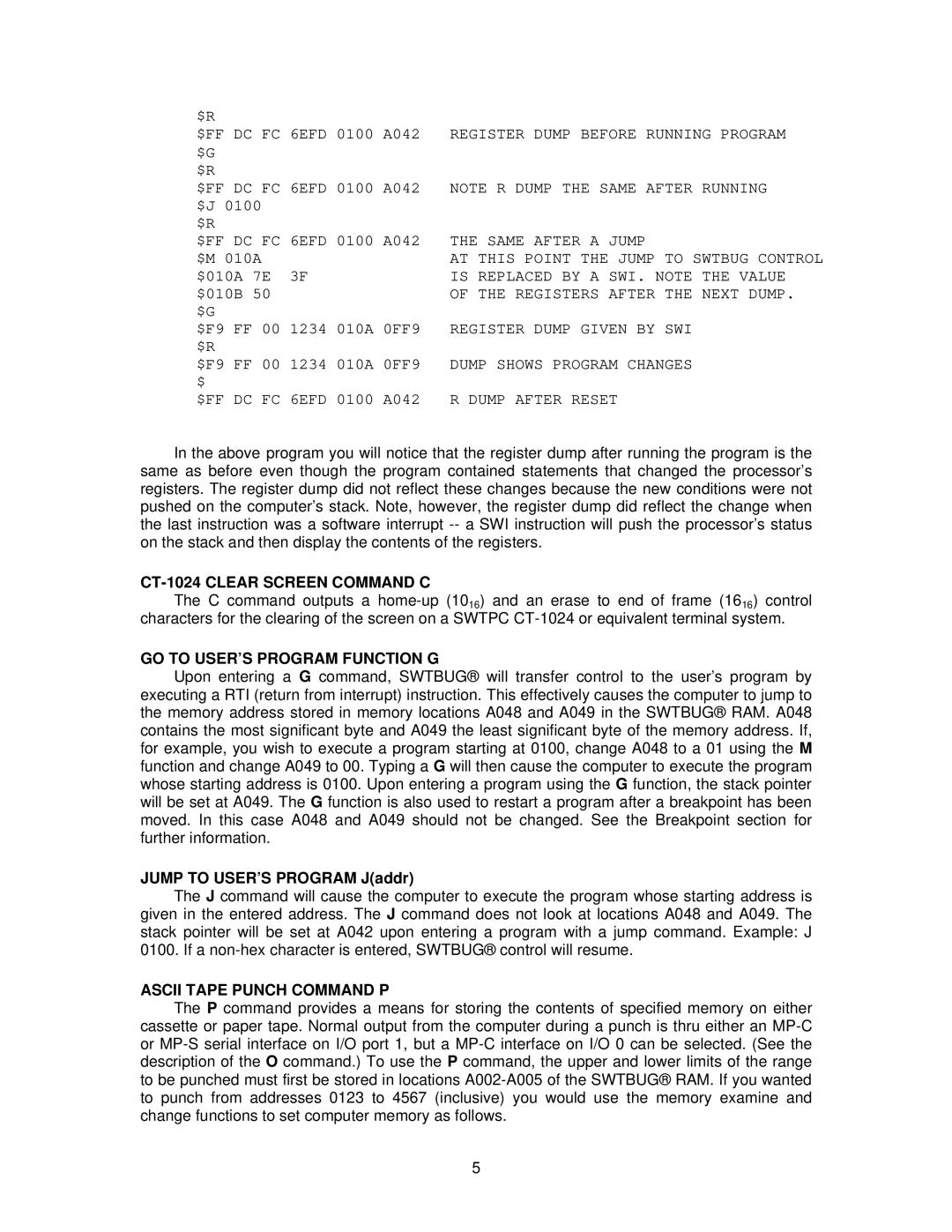$R |
|
|
$FF DC FC | 6EFD 0100 A042 | REGISTER DUMP BEFORE RUNNING PROGRAM |
$G |
|
|
$R |
|
|
$FF DC FC | 6EFD 0100 A042 | NOTE R DUMP THE SAME AFTER RUNNING |
$J 0100 |
|
|
$R |
|
|
$FF DC FC | 6EFD 0100 A042 | THE SAME AFTER A JUMP |
$M 010A |
| AT THIS POINT THE JUMP TO SWTBUG CONTROL |
$010A 7E | 3F | IS REPLACED BY A SWI. NOTE THE VALUE |
$010B 50 |
| OF THE REGISTERS AFTER THE NEXT DUMP. |
$G |
|
|
$F9 FF 00 | 1234 010A 0FF9 | REGISTER DUMP GIVEN BY SWI |
$R |
|
|
$F9 FF 00 | 1234 010A 0FF9 | DUMP SHOWS PROGRAM CHANGES |
$ |
|
|
$FF DC FC | 6EFD 0100 A042 | R DUMP AFTER RESET |
In the above program you will notice that the register dump after running the program is the same as before even though the program contained statements that changed the processor’s registers. The register dump did not reflect these changes because the new conditions were not pushed on the computer’s stack. Note, however, the register dump did reflect the change when the last instruction was a software interrupt
CT-1024 CLEAR SCREEN COMMAND C
The C command outputs a
GO TO USER’S PROGRAM FUNCTION G
Upon entering a G command, SWTBUG® will transfer control to the user’s program by executing a RTI (return from interrupt) instruction. This effectively causes the computer to jump to the memory address stored in memory locations A048 and A049 in the SWTBUG® RAM. A048 contains the most significant byte and A049 the least significant byte of the memory address. If, for example, you wish to execute a program starting at 0100, change A048 to a 01 using the M function and change A049 to 00. Typing a G will then cause the computer to execute the program whose starting address is 0100. Upon entering a program using the G function, the stack pointer will be set at A049. The G function is also used to restart a program after a breakpoint has been moved. In this case A048 and A049 should not be changed. See the Breakpoint section for further information.
JUMP TO USER’S PROGRAM J(addr)
The J command will cause the computer to execute the program whose starting address is given in the entered address. The J command does not look at locations A048 and A049. The stack pointer will be set at A042 upon entering a program with a jump command. Example: J 0100. If a
ASCII TAPE PUNCH COMMAND P
The P command provides a means for storing the contents of specified memory on either cassette or paper tape. Normal output from the computer during a punch is thru either an
5
